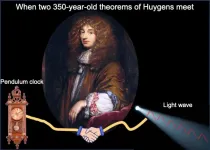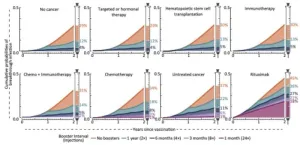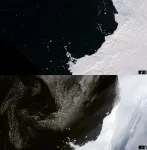(Press-News.org) Since the 17th century, when Isaac Newton and Christiaan Huygens first debated the nature of light, scientists have been puzzling over whether light is best viewed as a wave or a particle — or perhaps, at the quantum level, even both at once. Now, researchers at Stevens Institute of Technology have revealed a new connection between the two perspectives, using a 350-year-old mechanical theorem — ordinarily used to describe the movement of large, physical objects like pendulums and planets — to explain some of the most complex behaviors of light waves.
The work, led by Xiaofeng Qian, assistant professor of physics at Stevens and reported in the August 17 online issue of Physical Review Research, also proves for the first time that a light wave’s degree of non-quantum entanglement exists in a direct and complementary relationship with its degree of polarization. As one rises, the other falls, enabling the level of entanglement to be inferred directly from the level of polarization, and vice versa. This means that hard-to-measure optical properties such as amplitudes, phases and correlations – perhaps even these of quantum wave systems – can be deduced from something a lot easier to measure: light intensity.
“We’ve known for over a century that light sometimes behaves like a wave, and sometimes like a particle, but reconciling those two frameworks has proven extremely difficult,” said Qian “Our work doesn’t solve that problem — but it does show that there are profound connections between wave and particle concepts not just at the quantum level, but at the level of classical light-waves and point-mass systems.”
Qian’s team used a mechanical theorem, originally developed by Huygens in a 1673 book on pendulums, that explains how the energy required to rotate an object varies depending on the object’s mass and the axis around which it turns. “This is a well-established mechanical theorem that explains the workings of physical systems like clocks or prosthetic limbs,” Qian explained. “But we were able to show that it can offer new insights into how light works, too.”
This 350-year-old theorem describes relationships between masses and their rotational momentum, so how could it be applied to light where there is no mass to measure? Qian’s team interpreted the intensity of a light as the equivalent of a physical object’s mass, then mapped those measurements onto a coordinate system that could be interpreted using Huygens’ mechanical theorem. “Essentially, we found a way to translate an optical system so we could visualize it as a mechanical system, then describe it using well-established physical equations,” explained Qian.
Once the team visualized a light wave as part of a mechanical system, new connections between the wave’s properties immediately became apparent — including the fact that entanglement and polarization stood in a clear relationship with one another.
“This was something that hadn’t been shown before, but that becomes very clear once you map light’s properties onto a mechanical system,” said Qian. “What was once abstract becomes concrete: using mechanical equations, you can literally measure the distance between ‘center of mass’ and other mechanical points to show how different properties of light relate to one another.”
Clarifying these relationships could have important practical implications, allowing subtle and hard-to-measure properties of optical systems — or even quantum systems — to be deduced from simpler and more robust measurements of light intensity, Qian explained. More speculatively, the team’s findings suggest the possibility of using mechanical systems to simulate and better-understand the strange and complex behaviors of quantum wave systems.
“That still lies ahead of us, but with this first study we’ve shown clearly that by applying mechanical concepts, it’s possible to understand optical systems in an entirely new way,” Qian said. “Ultimately, this research is helping to simplify the way we understand the world, by allowing us to recognize the intrinsic underlying connections between apparently unrelated physical laws.”
END
Want to know how light works? Try asking a mechanic
Physicists at Stevens Institute of Technology use a 350-year-old theorem that explains the workings of pendulums and planets to reveal new properties of light waves.
2023-08-21
ELSE PRESS RELEASES FROM THIS DATE:
Ringing protons give insight into early universe
2023-08-21
NEWPORT NEWS, VA – In the middle of the last century, physicists found that protons can resonate, much like a ringing bell. Advances over the last three decades have led to 3D pictures of the proton and significant insight into its structure in its ground state. But little is known about the 3D structure of the resonating proton.
Now, an experiment to explore the 3D structures of resonances of protons and neutrons at the U.S. Department of Energy’s Thomas Jefferson National Accelerator Facility has added one more puzzle piece to the vast ...
Some experts believe that routine mask-wearing should continue in health care settings
2023-08-21
Embargoed for release until 5:00 p.m. ET on Monday 21 August 2023
Annals of Internal Medicine Tip Sheet
@Annalsofim
Below please find summaries of new articles that will be published in the next issue of Annals of Internal Medicine. The summaries are not intended to substitute for the full articles as a source of information. This information is under strict embargo and by taking it into possession, media representatives are committing to the terms of the embargo not only on their own behalf, but also on behalf of the organization they represent.
----------------------------
1. Some experts believe that routine mask-wearing should continue in health ...
Research aims to uncover genetic and environmental risk factors of nonalcoholic fatty liver disease
2023-08-21
DETROIT – Wanqing Liu, Ph.D., professor of pharmaceutical sciences in the Wayne State University Eugene Applebaum College of Pharmacy and Health Sciences and of pharmacology in Wayne State’s School of Medicine, received a $3 million, five-year award from the National Institute of Environmental Health Sciences of the National Institutes of Health. The study, “Interaction between Genome and Heavy Metals in Nonalcoholic Fatty Liver Disease,” aims to discover and validate the gene Х heavy metal (GXM) interactions in human livers ...
YALE NEWS: Additional COVID-19 boosters can benefit cancer patients—how often they should get them depends on their treatment
2023-08-21
New Haven, Conn. — For many, the threat of the COVID-19 pandemic seems over. However, for patients whose immune systems are compromised by cancer or by cancer therapies, fear of COVID-19 infection and severe disease remains very real.
Currently, CDC guidance recommends that immunocompromised patients receive COVID-19 booster shots “as needed.” While this flexibility is useful for patients with complex medical conditions, more specific guidance is lacking as to when additional COVID-19 boosting would be most effective.
New ...
Aggressive luminal breast cancer: Are cis-spliced fusion proteins pathological?
2023-08-21
“Our findings may provide a useful therapeutic approach for treating breast cancer patients who may suffer from early relapse and intrinsic resistance.”
BUFFALO, NY- August 16, 2023 – A new editorial paper was published in Oncotarget's Volume 14 on June 12, 2023, entitled, “Are cis-spliced fusion proteins pathological in more aggressive luminal breast cancer?”
A vast majority of breast cancers (~70%) are estrogen receptor-alpha positive (ER+), for which endocrine therapy is the common ...
Eye scans detect signs of Parkinson’s disease up to seven years before diagnosis
2023-08-21
Markers that indicate the presence of Parkinson’s disease in patients on average seven years before clinical presentation have been identified by a UCL and Moorfields Eye Hospital research team.
This is the first time anyone has shown these findings several years before diagnosis, and these results were made possible by the largest study to date on retinal imaging in Parkinson’s disease.
The study, published today in Neurology®, the medical journal of the American Academy of Neurology, identified markers of Parkinson’s in eye scans with the help of artificial ...
Did sabertooth tigers purr or roar?
2023-08-21
When a sabertooth tiger called out, what noise did it make – a mighty roar or a throaty purr? A new study from North Carolina State University examined the data behind the arguments for each vocalization and found that the answer was more nuanced than they thought – and that it could depend on the shape of a few small bones.
Modern cats belong to one of two groups: either the pantherine “big cats,” including the roaring lions, tigers and jaguars; or Felinae “little cats,” which include purring ...
Thinning ice sheets may drive sharp rise in subglacial waters
2023-08-21
Two Georgia Tech researchers, Alex Robel and Shi Joyce Sim, have collaborated on a new model for how water moves under glaciers. The new theory shows that up to twice the amount of subglacial water that was originally predicted might be draining into the ocean – potentially increasing glacial melt, sea level rise, and biological disturbances.
The paper, published in Science Advances, “Contemporary Ice Sheet Thinning Drives Subglacial Groundwater Exfiltration with Potential Feedbacks on Glacier Flow”, is co-authored by Colin Meyer (Dartmouth), Matthew Siegfried (Colorado School of Mines), and Chloe Gustafson (USGS).
While there are pre-existing methods to understand ...
New research finds way to reduce bias in children
2023-08-21
Children’s views of inequality may be influenced by how its causes are explained to them, finds a new study by a team of psychology researchers. The work offers insights into the factors that affect how larger social issues are perceived at a young age and points to new ways to reduce bias toward lower-status economic groups.
“When making sense of social inequalities, adults may consider the structural forces at play—for example, people may cite policies related to legacy admissions when thinking about how disparities first arise,” says Rachel Leshin, a New York University doctoral student and the lead ...
It all depends on the genetic diversity
2023-08-21
Plants are not exposed to herbivores without defenses. When an insect feeds on a leaf, thereby wounding it and releasing oral secretions, a signaling cascade is elicited in the plant, usually starting with a rapid increase in the amount of the plant hormone jasmonic acid and its active isoleucine conjugate. Jasmonic acid regulates various reactions in plants, including defenses against herbivores and responses to environmental stress.
Mutants with disadvantageous properties do not necessarily disappear
An important thesis of evolutionary theory is natural selection and the conclusion that mutants with disadvantageous properties disappear ...
LAST 30 PRESS RELEASES:
SEOULTECH researchers reveal strong public support for hydrogen fuel cell trucks
Dongguk University develops a new way to produce cheaper, more efficient green hydrogen
Scientists discover a hidden RNA “aging clock” in human sperm
New quantum boundary discovered: Spin size determines how the Kondo effect behaves
Ancient ‘spaghetti’ in dogs’ hearts reveals surprising origins of heartworm
Full value added tax on meat: a first step towards pricing the environmental damages caused by diets
Hidden mpox exposure detected in healthy Nigerian adults, revealing under-recognized transmission
Shingles vaccine linked to slower biological aging in older adults
A self-assembling shortcut to better organic solar cells
A two-week leap in breeding: Antarctic penguins’ striking climate adaptation
Climate risks to insurance and reinsurance of global supply chains
58% of patients affected by 2022 mpox outbreak report lasting physical symptoms
Golden Gate method enables rapid, fully-synthetic engineering of therapeutically relevant bacteriophages
Polar weather on Jupiter and Saturn hints at the planets’ interior details
Socio-environmental movements: key global guardians of biodiversity amid rising violence
Global warming and CO2 emissions 56 million years ago resulted in massive forest fires and soil erosion
Hidden order in quantum chaos: the pseudogap
Exploring why adapting to the environment is more difficult as people age
Society for Laboratory Automation and Screening welcomes new scientific director: Madeline M. Farley, Ph.D.
Austrian cow shows first case of flexible, multi-purpose tool use in cattle
Human nasal passages defend against the common cold and help determine how sick we get
Research alert: Spreading drug costs over the year may ease financial burden for Medicare cancer patients
Hospital partnership improves follow up scans, decreases long term risk after aortic repair
Layered hydrogen silicane for safe, lightweight, and energy-efficient hydrogen carrier
Observing positronium beam as a quantum matter wave for the first time
IEEE study investigates the effects of pointing error on quantum key distribution systems
Analyzing submerged fault structures to predict future earthquakes in Türkiye
Quantum ‘alchemy’ made feasible with excitons
‘Revoice’ device gives stroke patients their voice back
USF-led study: AI helps reveal global surge in floating algae
[Press-News.org] Want to know how light works? Try asking a mechanicPhysicists at Stevens Institute of Technology use a 350-year-old theorem that explains the workings of pendulums and planets to reveal new properties of light waves.






